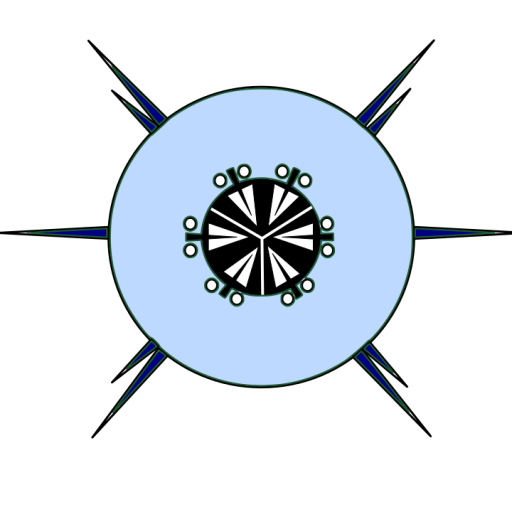The relationship between the observed macroecological patterns to changes in sea surface temperature (SST), primary production (Chl-a), and coastline complexity (D) along the length of the Chilean coast
The sea surface temperature (SST), primary productivity (PP) and coastline complexity (D), were all highly associated with latitude (Pearson’s correlations; SST: -0.992, p = 0.000; PP: 0.615, p < 0.001; D: 0.547, p = 0.004). The mean annual SST declined from 20.62 to 12.79 °C as latitude increased from 18 °S to 42 °S. Mean annual PP increased from 1024.25 to 2596.25 mgC·m-2·day-1 as latitude increased from 18 °S to 42 °S. The complexity of the coast, measured as the fractal dimension (D), increased from 2.02 to 2.15 with increasing latitude between 18 °S and 42 °S. The coast south of 40° is a highly complex system of fjiords channels. The highest value of D (2.59) along the coast of Chile is found at latitude 51 °S.
The nematode species richness in exposed sandy beaches decreased with decreasing SST. Species richness also decreased with increasing PP and D. Ordinary least squares (OLS) regression and simultaneous autoregression (SARerr) analyses found a significant relationship between species richness and both SST and the mean distribution range size (Tabla 1). Using the Akaike information criteria (ΔAIC < 2) the model with the strongest support was Rapoport’s rule (MLR). The similar slopes in both analyses, OLS y SARerrsuggest that the data is robust with respect to spatial auto-correlation.
| Explanatory | OLS | SARerr | |||
| variable | Slope | R2 | ΔAIC | Slope | ΔAIC |
| SST | 2.13 | 0.29 | 10.63 | 1.98 | 8.48 |
| PP | -0.01 | 0.07 | 17.48 | 0.00 | 7.15 |
| D | -64.23 | 0.27 | 11.45 | -44.10 | 7.76 |
| MLR | -4.88 | 0.54 | 0.00 | -4.30 | 0.00 |
The abundance of nematodes in exposed sandy beaches also increased with increasing SST. On the other hand, the abundance of nematodes decreased with increasing PP and D. The OLS and SARerr analyses indicated a significant relationship between abundance and, SST and PP (Table 2). Using the Akaike information criteria (ΔAIC < 2) the model with the highest support was SST (the ambient energy hypothesis). However, controlling for spatial auto-correlation the model with the most support was PP (the productivity hypothesis).
| Explanatory | OLS | SARerr | |||
| variable | Slope | R2 | ΔAIC | Slope | ΔAIC |
| SST | 0.134 | 0.36 | 0.00 | 0.068 | 3.98 |
| PP | <0.001 | 0.35 | 0.59 | <0.001 | 0.00 |
| D | -2.724 | 0.15 | 7.12 | -0.168 | 3.02 |
| MLR | -0.184 | 0.24 | 4.36 | -0.004 | 3.02 |
